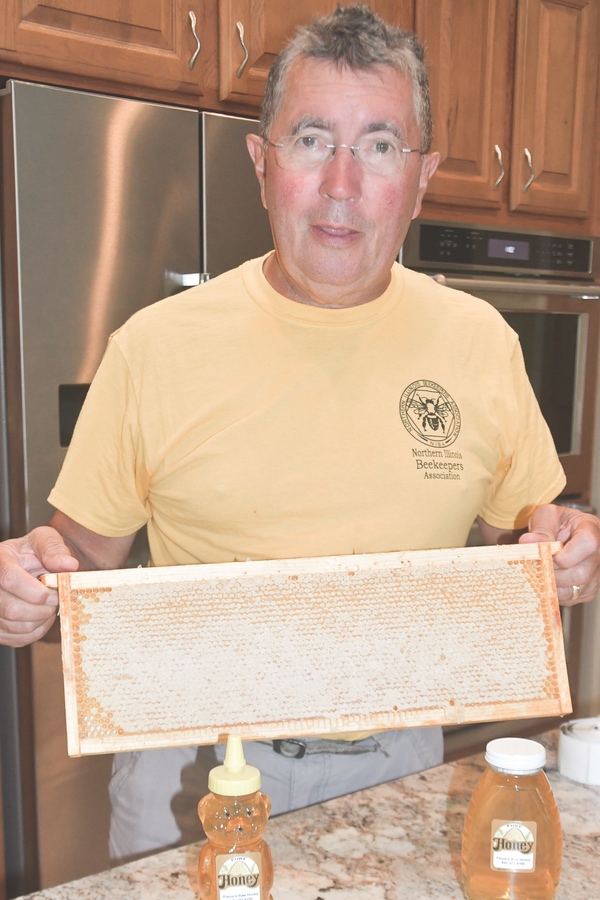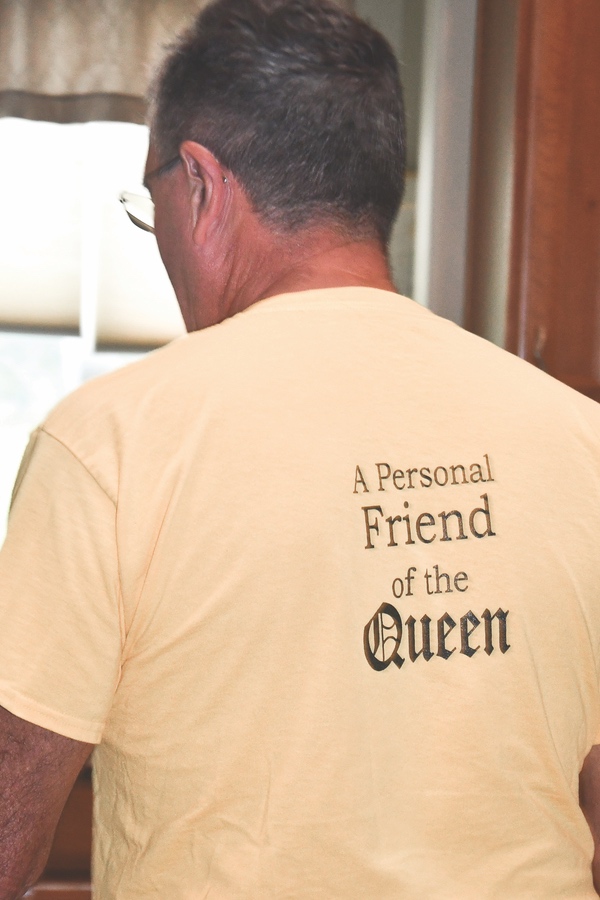Pierre Pollin, a Sun City Resident, was well known as an owner and chef of Le Titi de Paris in Arlington Heights.
“I worked as a Chef for 30 years. I retired in 2004,” he said.

Pierre Pollin. (Photos by Christine Such/Sun Day)
His extensive career as a chef earned Pollin recognition in the field.
Currently, he is buzzing about his new venture.
“We’ve been in Sun City for three years and along with my interest in gardening, I am a beekeeper,” Pollin said.
People have practiced beekeeping since ancient times in Egypt and Greece. Apart from honey and pollination, honeybees produce beeswax, royal jelly, and propolis.
“I can talk all day about bees,” Pollin said. “People call me and ask for my advice. I also sell honey. I carry it on my bike and my golf cart. I am always getting stopped and asked do you have any honey with you. I usually do.”
Why is Pollin’s honey in demand?
“People know my honey is made all from the beehive. There are no sugar additives,” he said.
Honey was the first sweetener before sugar was processed. There are differences to honey, even if it’s 100% honey, due to the flower used and how much it’s processed.
Pollin said, “One of my customer’s claims it has helped get rid of his allergies. As long as he has my honey he does not suffer from allergies.”
How much honey does Pollin produce?
“I can get about 25 gallons a year. I have a customer that buys about 2 ½ gallons three times a year.”
“I have six hives, and two of the six are producing quite a bit. Each of the colonies has its own Queen Bee. Bees are very hard working. They work themselves to death. They never sleep. Workers make up most of the colony and do all the hard work, including the collection of nectar and pollen,” Pollin said.
Worker bees, all female, have about 500 miles of flight in their before their wings give out.
Pollin said, “This is why the worker’s life is first work inside the hive when young and healthy, then work outside for as long as she lives.”
How do they survive the winter?

“This was a tough winter on the bees,” Pollin said. “I had a 75% survival rate, which was rare. Most of my friends who are beekeepers had a zero-survival rate.”
A healthy full-size colony, with an adequate supply of honey, and a strong healthy queen, can survive extreme temperatures. Adequate honey stores are about 80-90 pounds for our area.
“I was very worried this past winter, bees don’t come out unless the temperature is around 50 degrees. Bees stay in the hive and by their constant movement keep the Queen Bee warm at about 85 degrees. I decided to try to add food to the hive for the colony. I put some additional food at the top of the hive and I think that is why they survived. I don’t know for sure, but I did have 75% of the bees survive,” he said.
Pollin added that a bee’s survival depends on many factors.
“Bees also can die of disease or just constipation. They do not relieve themselves in the hive so if they cannot go out because of the weather, they die.” Pollin said.
The Western honeybee’s biggest enemy is called Varroa destructor. The mite is a huge threat to the health of the honeybees as it transmits dangerous diseases.
Pollin said. “I add medication in the fall to help with the mite problem. Of course, it is organic. You have to be careful; you don’t want the honey to be compromised. I also put a ‘gate’ up for wasps. Wasps cannot get through the screen, but bees can figure out how to go up and around it.”
It is estimated that one-third of the food that we consume each day relies on pollination mainly by bees.
You can contact Pollin directly if you would like to purchase and try ‘Pierre’s Raw Honey’ at 847-372-6100.




